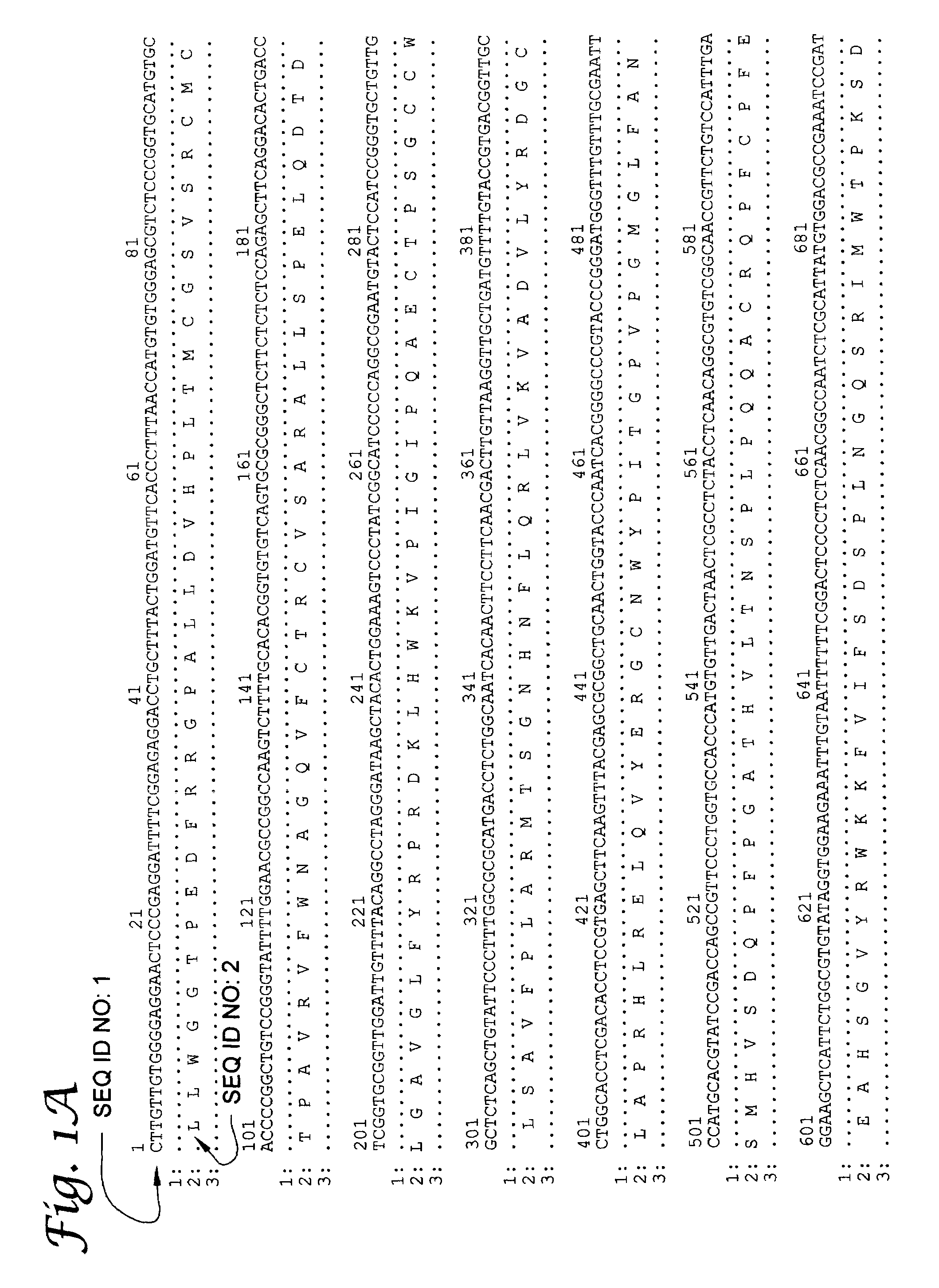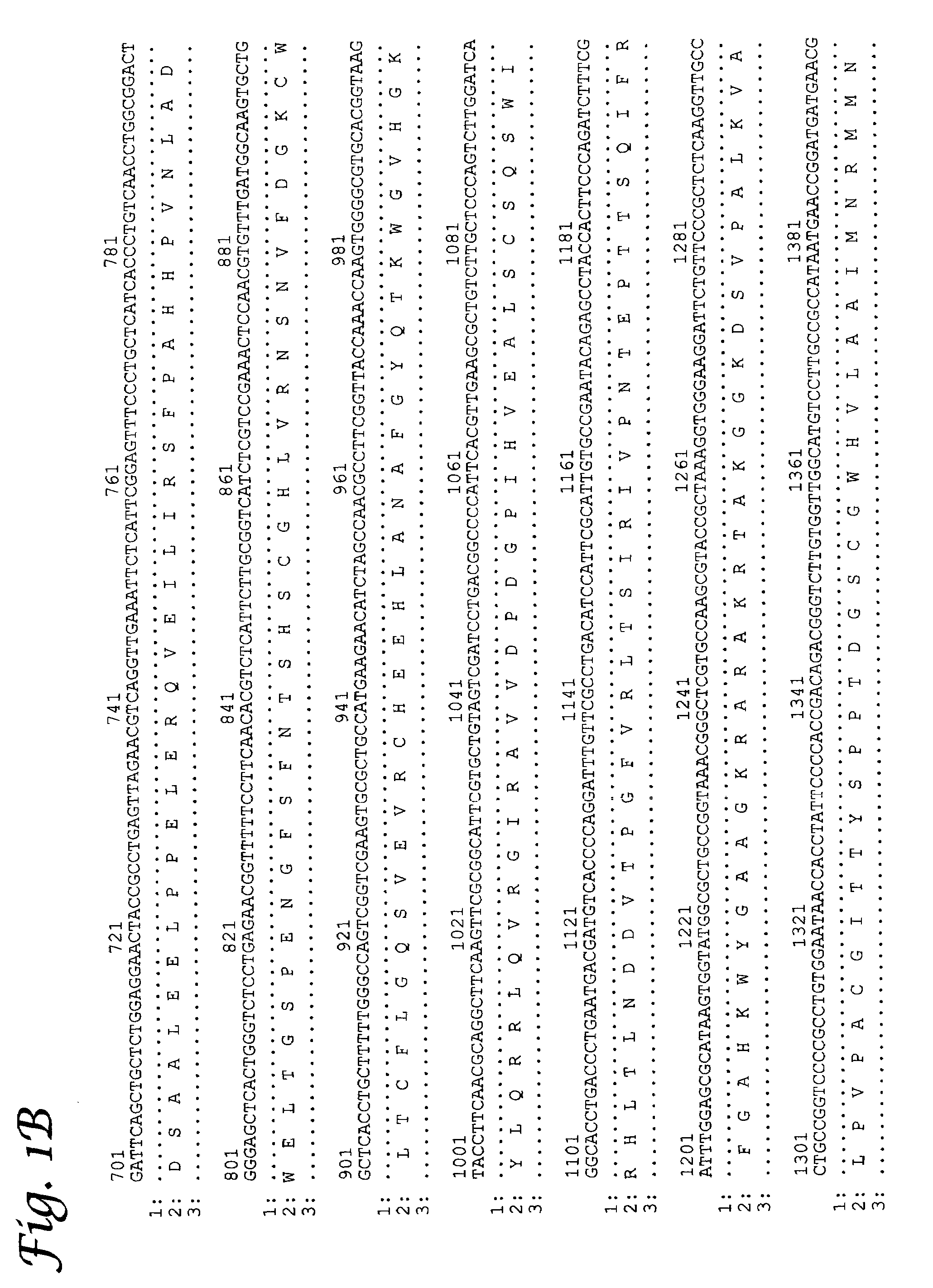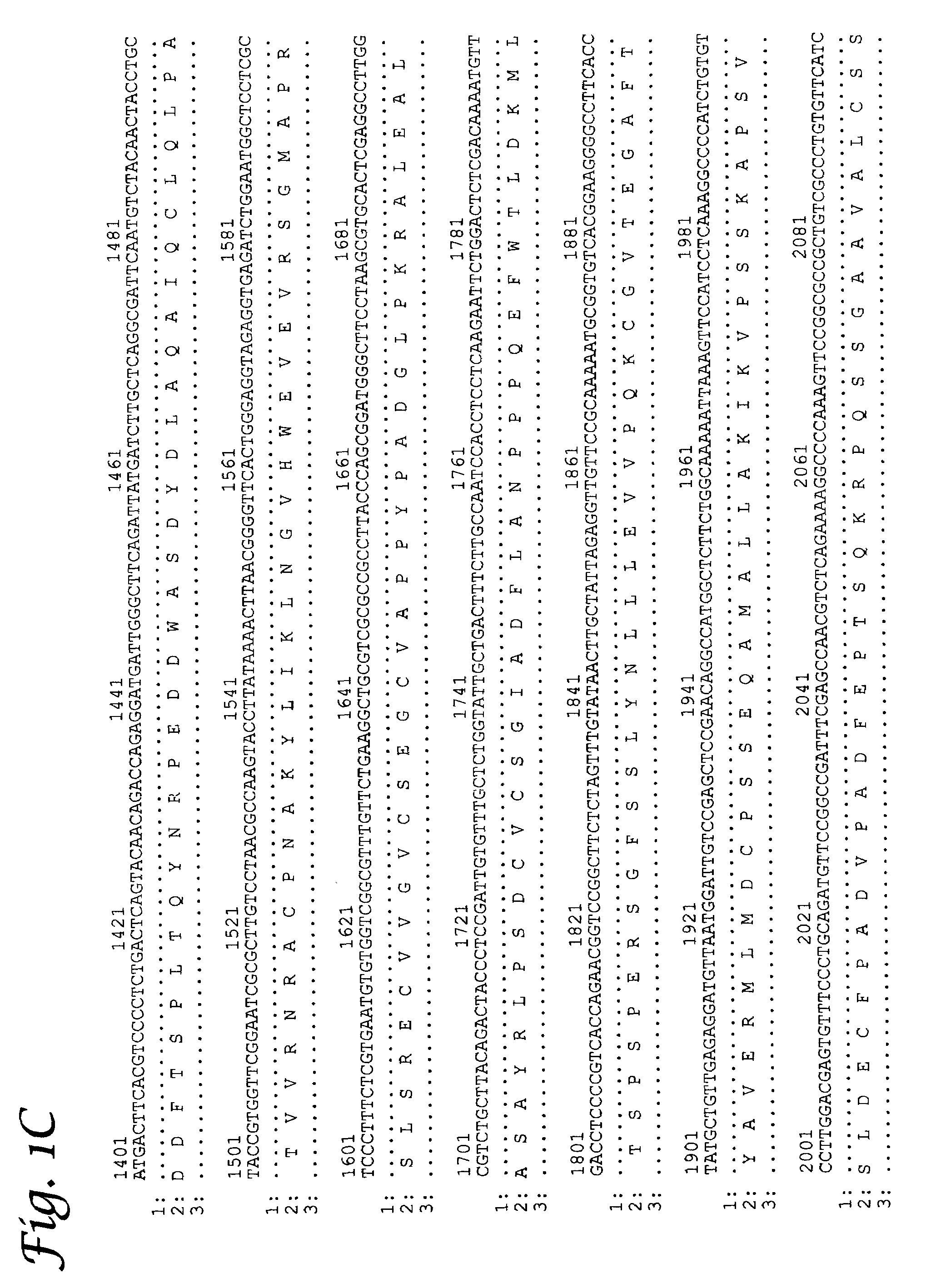Porcine reproductive and respiratory syndrome virus and methods of use
a technology of respiratory syndrome virus and reproductive system, which is applied in the field of reproductive and, can solve the problems of prrsv continuing to cause significant economic losses throughout the world, respiratory failure in pregnant sows and respiratory problems, and disease with a significant negative impact on the swine industry
- Summary
- Abstract
- Description
- Claims
- Application Information
AI Technical Summary
Benefits of technology
Problems solved by technology
Method used
Image
Examples
example 1
Detection of Virus in Infected Pigs
[0077]This example describes the isolation of a new PRRSV from infected pigs. The PRRSV was given the designation MND99-35186 and is referred to in these examples as European-like.
Methods
[0078]Three live, 3 to 4-day-old pigs from a herd with a clinical history of late-gestation abortions and weak-born pigs were submitted to the Minnesota Veterinary Diagnostic Laboratory (St. Paul, Minn.). The pigs were euthanized by intravenous over dose of barbiturate and necropsied (autopsied).
[0079]Portions of lung, lymph nodes, brain, spleen, kidney, tonsil and heart were collected and pooled as one sample. The sample was treated for the isolation of porcine reproductive and respiratory syndrome virus (PRRSV), pseudorabies virus (PRV), and swine influenza virus (SIV).
[0080]For isolation of PRRSV, samples were inoculated on MARC-145 cells and primary porcine alveolar macrophages. Before inoculation, the samples were treated as described by Rossow et al. (Vet. Pa...
example 2
Infection of Porcine Alveolar Macrophages with PRRSV
[0092]Porcine alveolar macrophages were isolated by collection from PRRSV-negative pigs less than 6-weeks-old. Pigs were euthanized, and trachea and lungs removed and airways lavaged with sterile phosphate buffered saline. The phosphate buffered saline was made by combining 8.5 grams NaCl, 1.1 grams disodium phosphate, and 0.32 gram sodium monophosphate in 10 liters distilled water. The Porcine alveolar macrophages were concentrated by centrifugation, confirmed negative for PRRSV by isolation and examination using direct fluorescent antibody as described in Example 1, and used immediately or stored in liquid nitrogen at a concentration of 106 cells / ml. Frozen alveolar macrophages chould be used within 6 months.
[0093]Freshly harvested porcine alveolar macrophages (about 107) or frozen cells (106 cells) were plated on a 1×48 well plate or a 1×75 cm flask, and allowed to adhere for 4 hours to overnight in about 10 to 25 ml RPMI-1640 c...
example 3
1. PRRSV RNA Extraction:
[0098]Viral RNA was extracted from macrophage culture supernatants using QIAamp Viral RNA Mini Spin Kit (QIAgen, Inc., Valencia, Calif.). Briefly, 280 μl cell culture fluid was added to 1120 μl Buffer AVL / Carrier RNA, pulse vortexed for 15 seconds, incubated at room temperature for 10 minutes, and centrifuged briefly. After this step, 1120 μl 100% ethanol was added to the reaction, pulse vortexed for 15 seconds, and centrifuged briefly. The reaction was then applied to a QIAamp spin column (in a 2 ml collection tube) in 630 μl aliquots (4×) and centrifuged at 6000×g (800 rpm) for 1 minute, discarding flow-through each time. When all sample was applied to the filter, the QIAamp spin column was placed into a clean 2 ml collection tube, and again centrifuged. Buffer AW1 (500 μl) was added to the filter containing viral RNA, and this reaction was centrifuged at 6000×g (8000 rpm) for 1 minute. Buffer AW2 (500 μl) was added to the spin col...
PUM
| Property | Measurement | Unit |
|---|---|---|
| Molar density | aaaaa | aaaaa |
| Molar density | aaaaa | aaaaa |
| Molar density | aaaaa | aaaaa |
Abstract
Description
Claims
Application Information
 Login to View More
Login to View More - R&D
- Intellectual Property
- Life Sciences
- Materials
- Tech Scout
- Unparalleled Data Quality
- Higher Quality Content
- 60% Fewer Hallucinations
Browse by: Latest US Patents, China's latest patents, Technical Efficacy Thesaurus, Application Domain, Technology Topic, Popular Technical Reports.
© 2025 PatSnap. All rights reserved.Legal|Privacy policy|Modern Slavery Act Transparency Statement|Sitemap|About US| Contact US: help@patsnap.com



